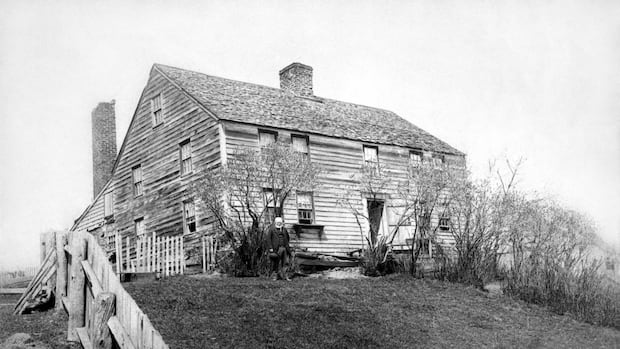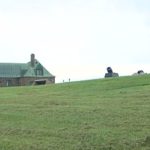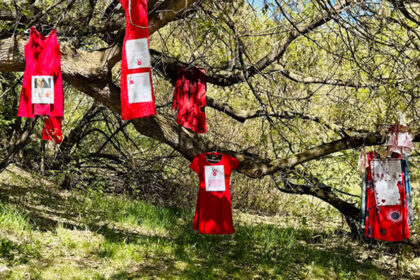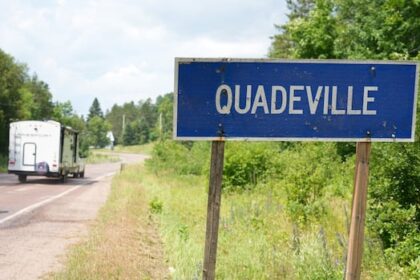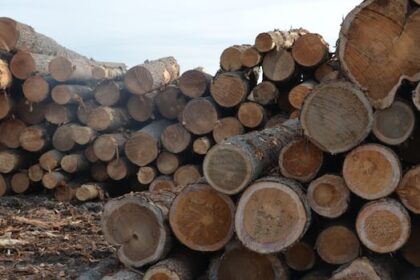Tuesday, Oct. 7, 2025, marks the 200th anniversary of the Great Miramichi Fire.That may have you wondering: What was so “great” about it? And why should modern-day New Brunswickers care about something that happened two centuries ago?CBC News spoke with some of the scholars, scientists and artists who’ve thought long and hard about those questions.Here’s what they find captivating about this flashpoint in provincial history.A map showing the limits of the Great Miramichi Fire of 1825. About 6,000 square miles of land were destroyed. (Submitted by the Provincial Archives of New Brunswick, file no. P211-6284)1. The firstThe Miramichi fire is usually the first forest fire listed not just in Canada, but in North America and around the world, said Alan MacEachern, author of The Miramichi Fire: A History and a history professor at Western University. Before it, settlers from areas of the world where few big tracts of forest were left weren’t used to such fires and hadn’t done much worrying about or planning for them, MacEachern said. It was the first one “that really got into people’s imagination — that, you know, we can burn this whole place down if we’re not careful,” he said.2. The sheer magnitudeEveryone in the first generation after the fire happened agreed that it basically covered “60 miles by 100 miles,” or one-fifth of New Brunswick, he said.Author Alan MacEachern said settlers from areas of the world where few big tracts of forest were left weren’t used to forest fires and hadn’t done much worrying about the prospect or planning for how to escape them. (Submitted by Alan MacEachern)People in Europe couldn’t fathom its size, he said. The fire was as big as Wales.It was the largest wildfire in the British Empire to that point and, to this day, remains one of the largest ever recorded in Canada, said MacEachern.3. The inconceivable strength and speed Even people who saw the fire in the distance were caught off guard by how fast it spread and how little it was slowed by clearings that they thought would create fire breaks and provide protection, said Valerie Sherrard.She researched the fire before writing her historical fiction novel Three Million Acres of Flame, and does school visits to talk about the book and the history of the fire. “It was travelling in many instances through the air in hurling balls of flame from the branches and trees that were ignited and the tremendous wind,” she said.4. The death tollAt least 160 people were officially recorded as having been killed by the fire, said MacEachern — but the toll was almost certainly higher.It didn’t include any Indigenous people, for one thing. And it was given early, so it doesn’t include anyone who died later from their injuries, he said. 5. The destructionAccording to the Provincial Archives of New Brunswick, only about a dozen buildings were left standing in the Newcastle area and six in Douglastown. Nearly 600 homes and farm buildings were destroyed.People spent hours in the river, desperate to survive, and when it was over they had no homes, possessions or winter provisions left, said Sherrard.They went from having decent lives to having nothing, she said: “Everywhere that they would have done anything was gone.””I think if you were there in 1825, October the 7th, you’d probably say that it came as close as it could ever come to the world ending,” said Shawn McCarthy, co-founder of Character Matters Miramichi, which staged a number of performances inspired by the fire this past weekend.6. The economic shockThe fire was of real economic concern to people all over the western world, said MacEachern. Wood-based shipbuilding was the big industry of the day and New Brunswick was a huge player on the scene, thanks to its bountiful forests.”It’s kind of like the Fort McMurray of 1825,” the author said.The region was supplying the British Empire in particular.”Britain was getting more of its wood from British North America than anywhere else. And within British North America, it was getting the most from New Brunswick. And within New Brunswick, it was getting most from the Miramichi.”7. The rallyThere was a tremendous outpouring of support from near and far once the flames died down. Merchants across the river in Chatham wrote off debts for fire victims and working people from Halifax sent their meagre savings, said Sherrard.Overseas charities also organized campaigns, said MacEachern.Eventually, the people affected rebuilt their lives and went back to work in the forest, he said.8. The resilience To Miramichiers of today, including McCarthy, it’s a testament to their resilience.”If we can kind of face those hardships and come out the other side, I don’t [think] there’s anything that we can’t face up to,” he said.The trees regenerated, too.”These were healthy, resilient old-growth forests, and so most of them popped back,” said MacEachern. This happened so well, in fact, that by about 1900, people began to wonder whether accounts of the fire had been exaggerated.9. The legacyAfter the fire, the species of trees in the forest probably shifted to less Acadian hardwood and more spruce and pine, said Ed Czerwinski, director of the Canadian Institute of Forestry’s Maritimes Section, which is hosting a conference Tuesday at the Hugh John Flemming Forestry Centre in Fredericton.Actors in Thomas Daley’s play about the fire, called Beneath the Smoke, performed it this past weekend at Carrefour Beausoleil. It dramatizes how the fire was experienced by regular people. (Submitted by Thomas Daley)It’s an educational event for forestry professionals, but also open to the public. Besides MacEachern, New Brunswick deputy minister of natural resources Chris Norfolk is also scheduled to speak about how the past shaped the present and future of forest management.”We’re so very grateful to our firemen and woods workers, to be able to prevent a disaster occurring on the scale that it did in 1825,” said McCarthy.10. The lessonsPeople have a tendency to forget and not plan for the next natural disaster, said MacEachern. But in the face of a bad wildfire season like the one not officially over yet, and what will be coming in the future as the climate changes, he thinks lessons of the past are worth considering.”The threat of a devastating fire is only ever a lightning bolt or a match away,” said Thomas Daley, who wrote a play about the Miramichi Fire called Under the Smoke. “It is very, very, very important that we stay on guard. We owe it to those who came before us and to those who will come after us,” he said.
10 things to know about the Great Miramichi Fire of 1825
